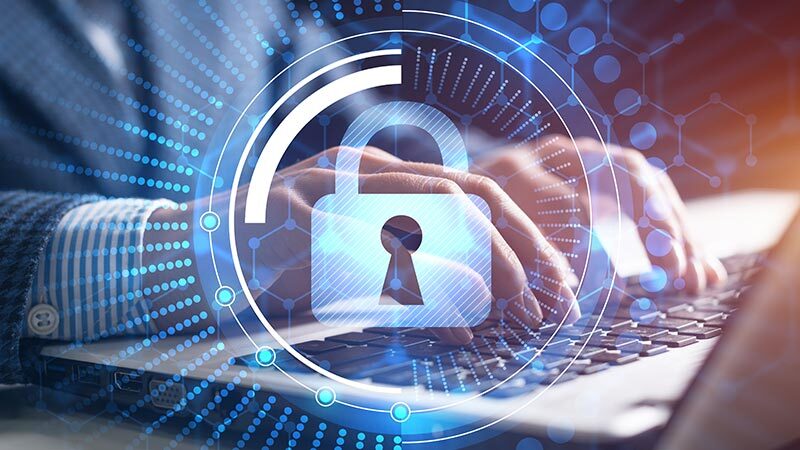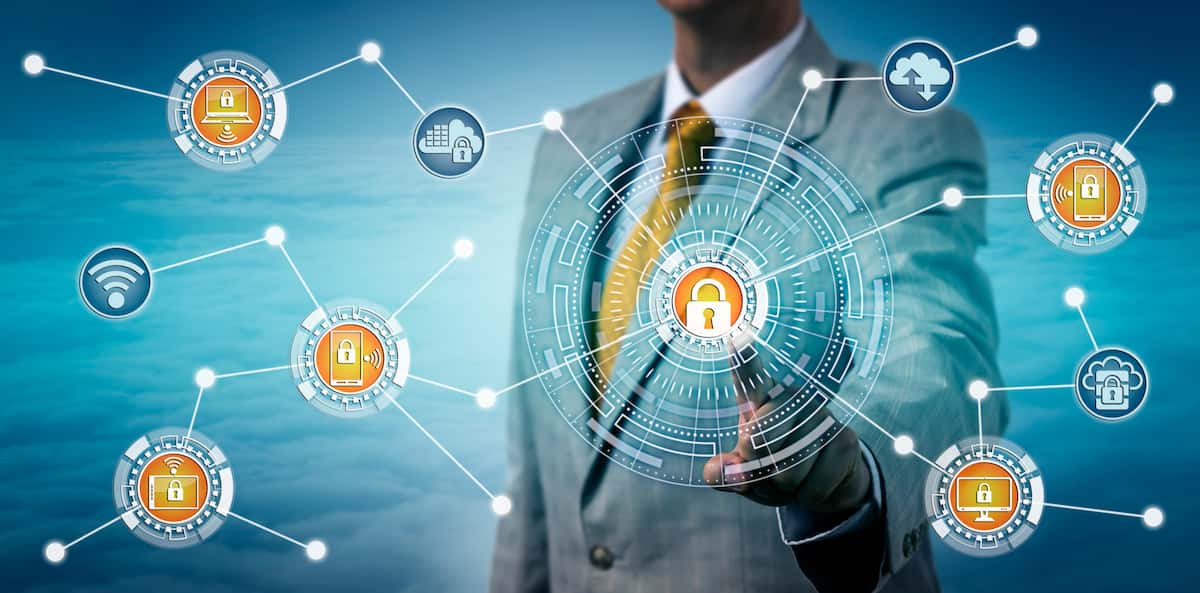Experience Peace of Mind with the Best Cyber Security Services in Dubai Today
Experience Peace of Mind with the Best Cyber Security Services in Dubai Today
Blog Article
Discovering Just How Cyber Safety Works to Safeguard Your Online Presence
In today's digital landscape, safeguarding one's on the internet presence has become significantly vital, with cyber dangers developing at an alarming pace. Cyber security uses a multifaceted technique, integrating sophisticated technologies like firewall softwares, file encryption, and multi-factor authentication to safeguard sensitive details. Exactly how do these technologies function with each other to develop a seamless guard against cyber hazards?
Understanding Cyber Threats
In the electronic landscape, cyber risks stand for a formidable challenge, requiring a nuanced understanding of their nature and potential impact. These threats encompass a wide variety of destructive tasks coordinated by people, groups, and even nation-states, targeting delicate information, interfering with operations, or causing reputational damages. Recognizing cyber dangers starts with determining the various types they take, consisting of malware, phishing, ransomware, and dispersed denial-of-service (DDoS) attacks.
Malware, or harmful software application, includes viruses, worms, and trojans that penetrate systems to steal data or cause injury. Ransomware secures victims' data, demanding a ransom money for its launch, positioning considerable operational and financial threats.
Recognizing the inspirations behind these risks is vital. Cybercriminals typically seek economic gain, while hacktivists might go after ideological goals. State-sponsored attackers could target critical infrastructure for espionage or destabilization purposes. By thoroughly recognizing the diverse nature of cyber risks, companies can much better prepare for prospective susceptabilities and strategically assign resources to boost their defenses against these ever-evolving risks.
Key Cyber Safety Technologies
As organizations make every effort to safeguard their digital possessions, vital cybersecurity modern technologies play a critical duty in fortifying defenses versus cyber dangers. IDS display network website traffic for dubious activities, while IPS proactively obstruct potential threats, making sure real-time security.
In addition, anti-viruses and anti-malware options stay fundamental in recognizing and mitigating harmful software program. They use heuristic and signature-based strategies to spot unidentified and well-known hazards. Endpoint discovery and action (EDR) systems better enhance safety by giving comprehensive presence right into endpoint activities, enabling swift incident feedback.
Identity and accessibility monitoring (IAM) technologies guarantee that only licensed customers access to essential sources, therefore minimizing the danger of unapproved data gain access to. Multifactor authentication (MFA) includes an added layer of protection, calling for customers to supply several confirmation variables.
Furthermore, safety and security information and occasion monitoring (SIEM) systems accumulation and assess protection data, providing insights into possible vulnerabilities and facilitating aggressive hazard management. These modern technologies collectively develop a durable structure, equipping companies to keep a resilient cybersecurity pose.
Function of Firewalls and File Encryption
Firewall programs and security are essential elements of a durable cybersecurity approach, each offering a distinctive yet complementary duty in securing electronic settings. Firewalls work as obstacles in between relied on inner networks and untrusted external entities. By regulating outbound and inbound network website traffic, they stop unapproved access to systems and information. Firewall softwares make use of predefined security policies to block or allow data packets, efficiently securing delicate details from cyber threats. They are the initial line of defense, filtering web traffic and ensuring just legitimate interactions are enabled.
Security, on the various other hand, transforms readable information right into an encoded style that can only be analyzed with a details cryptographic key. Security is vital for safeguarding delicate info such as financial information, personal identification information, and exclusive service details.
Together, firewall programs and encryption give a detailed protection system. While firewall programs manage access and guard networks from check it out unauthorized entry, security safeguards information integrity and confidentiality. Their incorporated application is necessary in mitigating threats and making sure the security of digital possessions in a progressively interconnected world.

Importance of Multi-Factor Verification
While firewall programs and security develop the foundation of cybersecurity, enhancing defenses further calls for the implementation of multi-factor authentication (MFA) MFA adds an extra layer of safety and security by needing customers to verify their identification through two or more various aspects before getting to sensitive information or systems. These variables generally consist of something the customer recognizes (a password), something the individual has (a safety token or mobile phone), and something the user is (biometric verification such as a finger print or face recognition)
The significance of MFA in safeguarding on the internet existence is paramount in today's digital landscape. With cyber threats coming to be significantly advanced, depending solely on traditional password-based authentication leaves systems susceptible to violations. MFA considerably lowers the threat of unapproved access by making it significantly a lot more difficult for cybercriminals to jeopardize an account. Also if a password is taken, the extra verification actions work as a powerful obstacle.

Behavioral Analytics in Cyber Security
Behavioral analytics stands for an essential development in cybersecurity, supplying an advanced strategy to danger detection and avoidance. By analyzing patterns in individual actions, this technique recognizes anomalies that might indicate prospective cyber hazards. Unlike standard security procedures, which frequently count on predefined guidelines and signatures, behavior analytics leverages device knowing and statistical models to establish a standard of regular activity. When inconsistencies from this standard occur, it sets off signals for web more examination, enabling faster feedback times to prospective violations.
This innovation is specifically reliable in discovering expert threats and zero-day strikes, which are frequently missed by traditional security systems. Expert risks, where individuals within a company misuse access privileges, can be particularly destructive and difficult to detect. Best Cyber Security Services in Dubai. Behavior analytics offers a layer of analysis that can catch subtle variances in actions, such as uncommon gain access to patterns or information transfers, before they escalate into considerable protection events
In addition, the dynamic nature of behavior analytics permits it to adapt to evolving risks, supplying constant defense as cyberattack techniques transform. As organizations progressively depend on digital facilities, integrating view it now behavioral analytics into cybersecurity approaches makes sure a durable protection, keeping and guarding delicate data count on in digital interactions.
Conclusion
In verdict, the complex method of cyber security, incorporating technologies such as firewalls, file encryption, multi-factor verification, and behavioral analytics, plays an essential function in shielding on the internet visibility. By filtering website traffic, securing information transmission, requiring several confirmation methods, and checking user task for anomalies, these modern technologies collectively attend to the intricacies of contemporary cyber threats. This split protection not only safeguards financial and individual information yet likewise ensures continual security in an ever-evolving digital landscape.

As organizations strive to guard their digital assets, crucial cybersecurity innovations play a critical duty in strengthening defenses against cyber dangers. Firewall softwares utilize predefined protection policies to obstruct or permit information packets, effectively protecting sensitive details from cyber risks.This technology is specifically reliable in detecting expert hazards and zero-day strikes, which are commonly missed out on by traditional safety systems. By filtering traffic, protecting information transmission, requiring multiple verification techniques, and monitoring individual activity for anomalies, these technologies collectively deal with the complexities of modern-day cyber risks.
Report this page